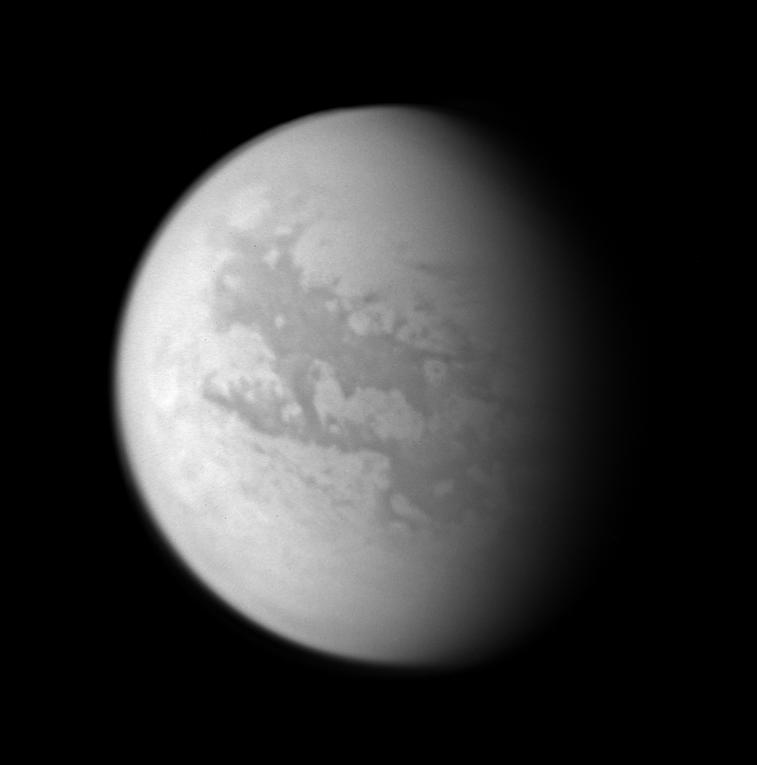Cassini’s View of Titan: Monochrome View

| PIA Number | PIA06228 |
|---|---|
| Language |
|
This image composite was created with images taken during the Cassini spacecraft's closest
flyby of Titan on April 16, 2005. Cassini's cameras have numerous filters that reveal features
above and beneath the shroud of Titan's atmosphere.
This monochrome view shows what Titan looks like at 938 nanometers, a near-infrared
wavelength that allows Cassini to see through the hazy atmosphere and down to the surface. The
view was created by combining three separate images taken with this filter, in order to improve
the visibility of surface features. The variations in brightness on the surface are real differences
in the reflectivity of the materials on Titan.
North on Titan is up and tilted 30 degrees to the right.
These images were taken with the Cassini spacecraft wide angle camera on April 16, 2005, at
distances ranging from approximately 173,000 to 168,200 kilometers (107,500 to 104,500 miles)
from Titan and from a Sun-Titan-spacecraft, or phase, angle of 56 degrees. Resolution in the
images is approximately 10 kilometers (6 miles) per pixel.
The Cassini-Huygens mission is a cooperative project of NASA, the European Space Agency
and the Italian Space Agency. The Jet Propulsion Laboratory, a division of the California
Institute of Technology in Pasadena, manages the mission for NASA's Science Mission
Directorate, Washington, D.C. The Cassini orbiter and its two onboard cameras were designed,
developed and assembled at JPL. The imaging team is based at the Space Science Institute,
Boulder, Colo.
For more information about the Cassini-Huygens mission visit http://saturn.jpl.nasa.gov . For
additional images visit the Cassini imaging team homepage http://ciclops.org .
Credit: NASA/JPL/Space Science Institute
